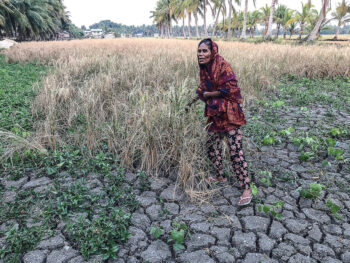KORONADAL CITY (MindaNews/04 Feb) — Even as donors’ aid comes in “trickles,” the United Nations Office for the Coordination of Humanitarian Affairs (OCHA) raised to $39 million (around P1.7 billion) its appeal for financial assistance to victims of Tropical Storm Sendong (international name Washi), which left at least 1,200 persons dead and thousands homeless in Northern Mindanao last December.
The revised appeal is necessary to continue providing vital assistance to more than 300,000 in a period of six months, OCHA said in a statement.
It represents a $10.6 million increase from the .
4 million initially requested after Sendong unleashed its fury shortly before the Christmas holidays.
As of Friday, OCHA noted that only $9.6 million (or 25 percent) has been reached, including $3 million disbursed from the Central Emergency Response Fund (CERF) in support of immediate, life-saving activities.
“I have been tremendously encouraged to witness the tireless efforts of the government, aid organizations, civil society and the affected communities themselves to provide vital assistance to hundreds of thousands of Sendong survivors” said Jacqui Badcock, UN Resident and Humanitarian Coordinator for the Philippines.
She stressed that “sustained, generous financial support is crucial to enable provision of basic goods and services and the rebuilding of resilient communities.”
“Many lives have been saved through our interventions to date,” Badcock said.
But she warned that “unless this assistance is sustained and adequate shelter solutions are provided to all the displaced, many will remain vulnerable and unable to sustain themselves and their families.”
Badcock urged donors to “back the new response plan and the affected communities of Mindanao generously.”
Sendong battered Cagayan de Oro and Iligan cities and some parts of Bukidnon and Surigao on December 16 to 17, bringing torrential rains that triggered flash floods and landslides.
Nearly 48,000 houses were damaged and livelihoods of as many as 625,000 people were affected. More than 550,000 were forced out of their homes, OCHA said.
Seven weeks after the disaster, some 21,900 survivors remain in largely overcrowded evacuation centers in Cagayan de Oro and Iligan cities and more than 400,000 people continue seeking refuge in makeshift shelters and with host families in their areas of origin, the UN agency said.
Some have also returned to their damaged houses in highly hazardous and disaster-prone areas, recently declared by the government as ‘no-build’ zones, it added.
Hours after the disaster hit, the government and aid organizations launched a large-scale relief operation and have since been providing life-saving assistance to more than 430,000 people, including emergency shelter, food, water and sanitation, medical and psycho-social care, protection, education and other relief goods.
But sustained assistance is needed given that hundreds of thousands of people remain without homes and livelihoods, OCHA said.
The revised appeal presents an adjusted plan of action developed by the government and aid agencies, following a second phase of multi-cluster rapid assessments and sector specific assessments as well as review of available secondary data available and the response to date.
Under the plan, the humanitarian community prioritized provision of assistance to all affected, including the displaced in evacuation centers and transitional sites as well as people seeking refuge in makeshift shelters and with relatives in areas where their houses stood prior to the disaster and host communities themselves.
The special needs of vulnerable groups – women, children, elderly and persons with disabilities — and people in cut off and underserved, remote rural areas, some of which are also affected by on-going conflicts, are also being addressed.
The government-endorsed response plan, presented under the revised appeal, includes 48 projects, in 13 key sectors, submitted by 13 non-government organizations and 10 UN agencies and an international organization. (Bong Sarmiento/MindaNews)
